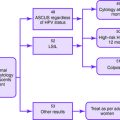Chapter 21 HYPOTHYROIDISM
Hypothyroidism usually results from decreased thyroid hormone production and secretion by the thyroid gland. Hypothyroidism can be either primary or central. Central hypothyroidism involves either the pituitary gland (secondary hypothyroidism) or the hypothalamus (tertiary hypothyroidism). In the United States, the most common cause of hypothyroidism is chronic autoimmune thyroiditis.
Causes of Hypothyroidism
Key Historical Features
Key Physical Findings
✓ Gastrointestinal examination for ascites
✓ Pulmonary examination for a pleural effusion
✓ Neurologic examination for proximal weakness, peripheral neuropathy, and a slow return of deep tendon reflexes
Suggested Work-Up
| TSH measurement | Levels are high in primary hypothyroidism and subclinical hypothyroidism; levels are low, normal, or minimally elevated in central hypothyroidism |
| Free thyroxine (T4) measurement | Levels are low in primary and central hypothyroidism, normal in subclinical hypothyroidism, and high in peripheral thyroid hormone resistance |
Additional Work-Up
| Total triiodothyronine (T3) measurement | Less useful than T4 measurement because T3 level may be normal in patients with hypothyroidism |
| Measurement of thyroid peroxidase autoantibodies | These are often detectable in patients with Hashimoto thyroiditis (measurement is useful in patients with subclinical hypothyroidism) |
| Measurement of thyroglobulin autoantibodies | These are usually present with Hashimoto thyroiditis, although less so than thyroid peroxidase autoantibodies |
| Magnetic resonance imaging (MRI) of the brain and pituitary gland | If central hypothyroidism is present |
| Thyroid ultrasonography | If a thyroid nodule is detected on examination |
| Fine needle aspiration | To determine whether a palpable nodule is malignant |
| Measurement of luteinizing hormone (LH), follicle-stimulating hormone (FSH), cortisol level, prolactin, insulin-like growth factor 1 | If central hypothyroidism is diagnosed (to evaluate for hypopituitarism) |
| Thyrotropin-releasing hormone stimulating test | To distinguish secondary from tertiary hypothyroidism |
| Electrolyte measurements | Severe hypothyroidism may result in hyponatremia |
| Lipid panel | Hypothyroidism is associated with elevated triglycerides and elevated low-density lipoprotein cholesterol |
| Complete blood cell count | Hypothyroidism is associated with anemia |
| Fasting blood glucose measurement | To evaluate for diabetes |
American Association of Clinical Endocrinologists. Medical guidelines for clinical practice for the evaluation and treatment of hyperthyroidism and hypothyroidism. Endocr Pract. 2002;8:458-469.
Devdhar M, Ousman YH, Burman KD. Hypothyroidism. Endocrinol Metab Clin North Am. 2007;36:595-615.
Hueston WJ. Treatment of hypothyroidism. Am Fam Physician. 2001;64:1717-1724.
Schmidt DN, Wallace K. How to diagnose hypopituitarism. Postgrad Med. 1998;104(7):77-78. 81-87
Wartofsky L, Van Nostrand D, Burman KD. Overt and “subclinical” hypothyroidism in women. Obstet Gynecol Surv. 2006;61:535-542.




